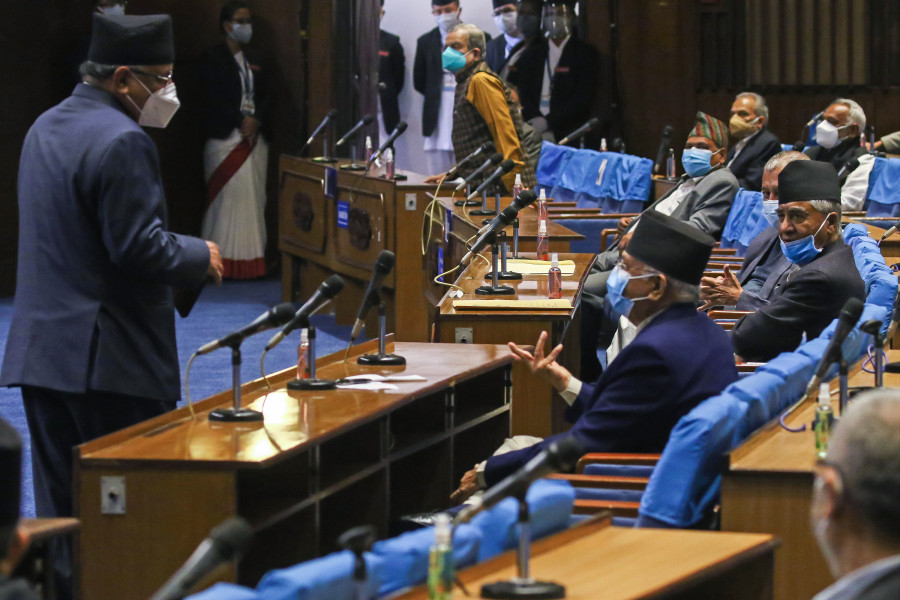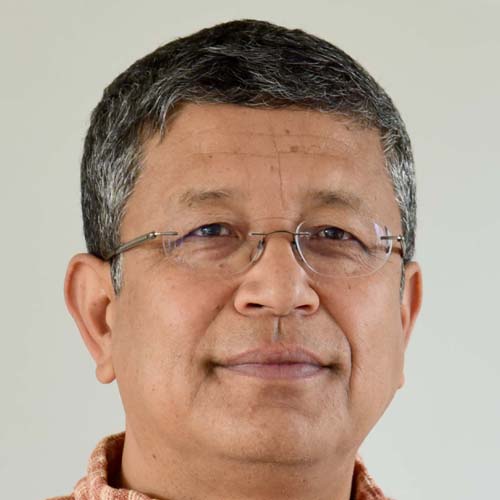Columns
Our election, their election
Sunak was chosen not for his longevity in politics, but because he was considered the best.
Deepak Thapa
There is an interesting parallel between the upcoming general election here and the mid-term one in the United States—the unprecedented uncertainty of what the outcome will be.
I daresay this is the first time that we are going into an election without any indication of how the electorate is likely to vote. The one closest instance is probably the 1959 parliamentary election since none of the parties had ever been tested at the hustings till then. But if anyone had to make a guess then, they would have had to recognise the towering persona of BP Koirala to conclude that the Nepali Congress stood a good chance of forming a government.
Following the restoration of democracy in 1990 and despite the strong presence of the left during the 1991 election campaign, it was more or less taken for granted that the Congress would return to power. In 1994, the disarray within the Congress, and in 1999, the split in the CPN-UML was enough to correctly assume heavy losses to both.
Then came the election to the Constituent Assembly in 2008. The upset the Maoists pulled off was surely somewhat of a surprise, but in hindsight not altogether unexpected given the widespread hankering for a fresh start. That the Maoist call for change proved to be a sham was to come later. But none of that was known when we went into the elections with conventional wisdom having written off the Maoists in third place behind the Congress and the UML.
Unrequited promise
In the election to the second Constituent Assembly in 2013, the staleness of the Maoist brand, further sullied by the unrequited promises of 2008, meant they fought as underdogs, and the votes duly reflected that premise. In 2017, the pre-poll communist alliance taken together with Sher Bahadur Deuba’s pre-election blunders had made it clear the Congress would be worsted even if few expected the kind of drubbing it received.
This time, however, there is a big question mark regarding the electoral outcome. Sections of the media have been providing prognoses based on past performances. The recently concluded local elections have proved particularly useful for some simple arithmetic, but how those results will translate into actual parliamentary votes is anyone’s guess. The electoral alliances that stink of both opportunism and expediency has had political pundits shy away from any predictions. The picture has been further muddied by the entry of independents hoping to repeat the success of a few such at the municipal level.
The similarity with the US elections ends here though. Whereas out there, the outcome will definitively chart the future course between two divergent outlooks that will shape not only America but possibly the world itself through action (or inaction) on issues such as climate change, here, we are being served more of the same.
One of the big stories coming out of the current election cycle in Nepal is the “No, Not Again” campaign against party leaders who have contributed mostly to malgovernance over the decades. The Election Commission’s order to end it on pain of penalties provided greater publicity to it instead, and it has now taken a life of its own.
It is doubtful though that such efforts will be persuasive enough to have much of an effect on how people vote in the elections. The best we can hope is it will serve as a warning to our top politicians on what the mood of the country is. Not that they are not already aware of it despite the delusional rants from each of them that Nepali are all looking forward to their leadership yet again.
The tragedy is that there is no alternative the electorate can turn to apart from the untested independents. The latter would have to be elected in considerable numbers to be able to have any impact on how the country is run. Even if such an outcome were possible, since theirs is not a coordinated movement and they also appear to have varying ideological positions, the bickering would start from day one, beginning with the question of who would lead those outside the party fold. And, in a parliamentary system, without such an alignment, independents would be nothing but isolated voices the parties could easily ignore, much to their frustration and to those who would elect them.
Staying with parallels, and this time the United Kingdom, the similarity between Liz Truss’s short prime ministership and KP Sharma Oli’s even briefer third one was noteworthy in one aspect—the highest levels of diversity. It has been pointed out that under Truss for the first time in the UK’s history, there was no white male occupying any of the four “great offices of state”, that of prime minister, home, finance and foreign. Oli’s third cabinet, admittedly coming from a cynical move to extend his own rule, was remarkably diverse as well although some of the ministers did not get to settle down properly before being booted out by the Supreme Court.
Following Truss came Rishi Sunak, an even bigger fillip for the cause of diversity. The elevation of a non-white person to the top office not from the Labour Party, as would be expected, but from the Conservative Party was unforeseen just a while ago. We do not yet know if Sunak’s becoming the first minister of the crown is likely to lead some on the right to revolt and seek refuge in white nationalism—a highly possible proposition—despite the new prime minister’s impeccable credentials as one fully at home with such characters.
Hoary faces
What is remarkable is that Sunak reached the pinnacle of power after only seven years in politics. That is a feat that did not go unnoticed by the Nepali media, especially since we are getting ready to vote in an election that would choose a prime minister from a group of hoary faces who have been tested time and again. Sunak was chosen by his party not for his longevity in politics, but because he was considered the best. Our smart young politicians, on the other hand, have to grapple with gerontocrats who show no signs of quitting at all.
Take Sher Bahadur Deuba. When he first became prime minister in 1995, the UK was led by John Major, whose name would probably elicit a “John who?” from most of our young voters. Older than Deuba by only three years, Major left active politics not long after he led his party to an electoral loss. Meanwhile, Deuba soldiers on. He hopes to become prime minister for the sixth time and fervently appears to believe his astrologer’s prophesy that his run will extend to a seventh. Enough for us all to echo the pithy “No, Not Again”. Not him, nor any of those arrayed against him.




 17.12°C Kathmandu
17.12°C Kathmandu















